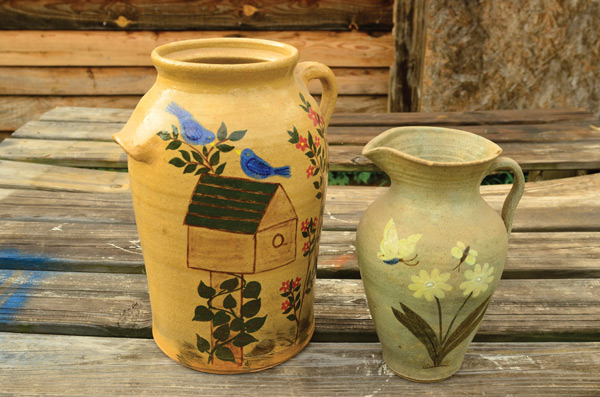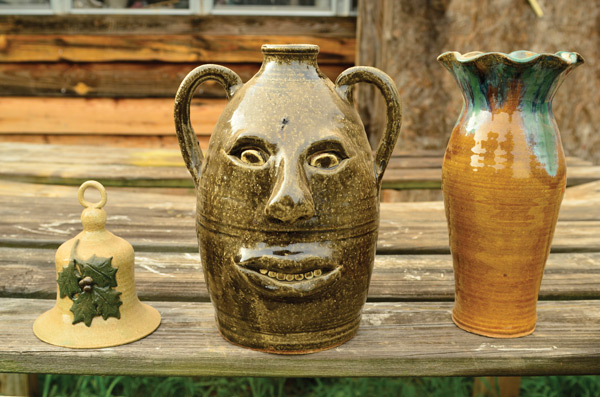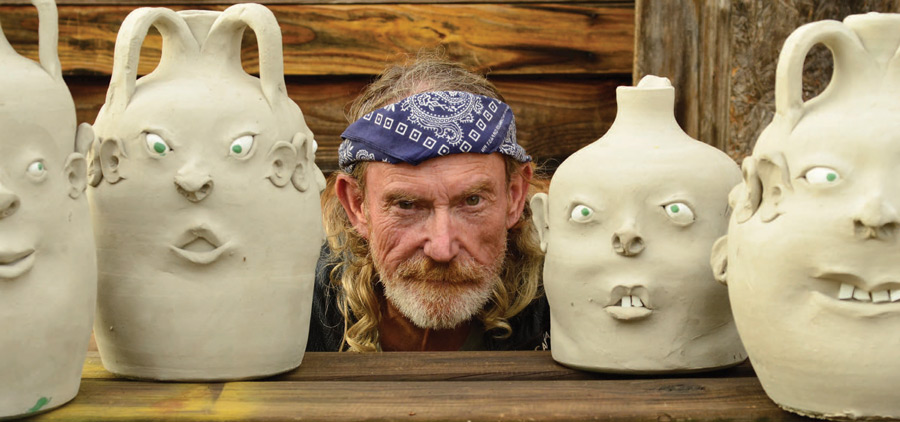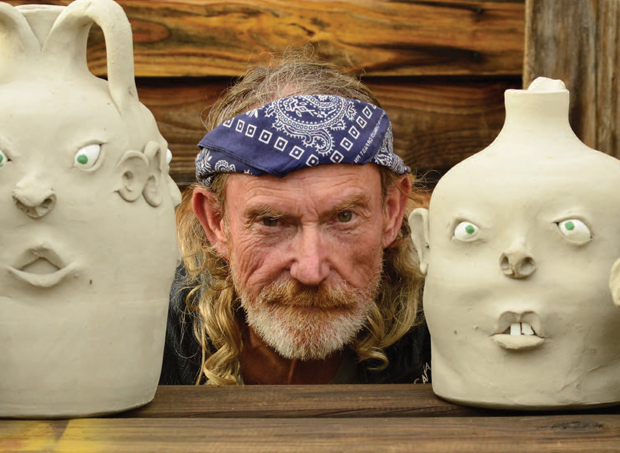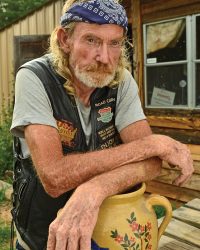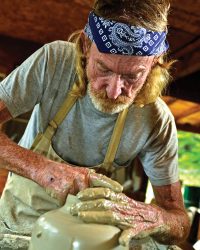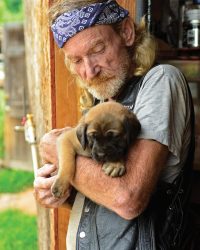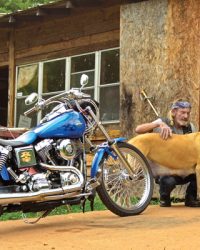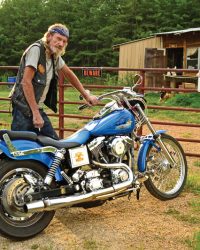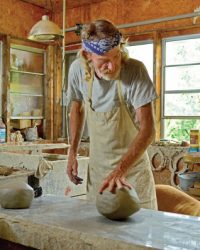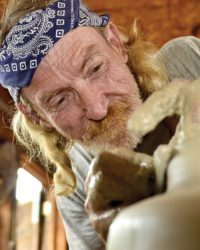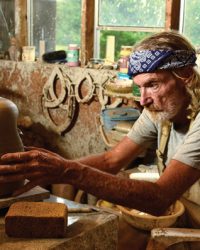A Biker, an Artist, a Potter and He May Be a Philosopher, Too!
He’s a Biker, an Artist, a Potter and He May Be a Philosopher, Too!
By Eric Albright
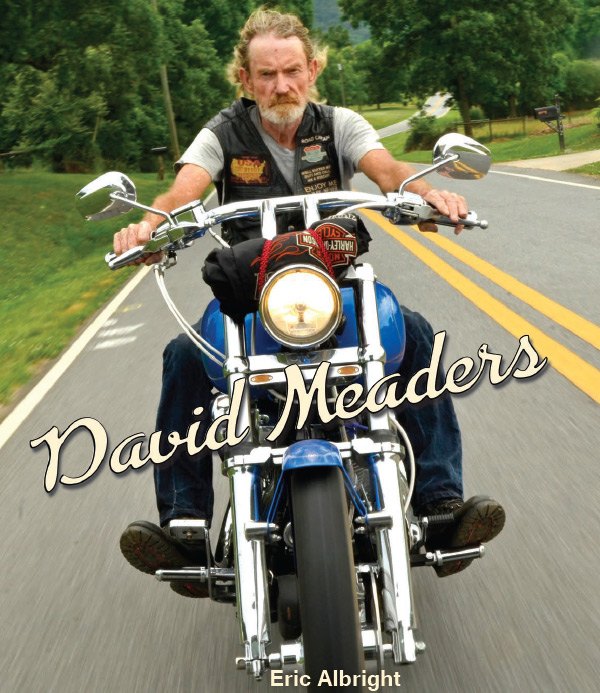 One of the best parts of my work for the last 30 years has been the people I have met and worked with. I have shot interviews with world leaders as well as icons of the music, film and sports industries. For the most part, these shoots are fun and every once and a while they’re exciting. But many times it’s the person I don’t know beforehand that will leave the biggest impression on me. Meeting fellow biker, David Meaders is one of those times. Now to hear David speak about himself, he’s just a “rednecked hillbilly” who would just like to “live up to his reputation as the second laziest man in this part of the country.” But he is also one of the last of his kind, especially here in Georgia. His family has been making pottery since his great-granddaddy built their first fire kiln in 1892.
One of the best parts of my work for the last 30 years has been the people I have met and worked with. I have shot interviews with world leaders as well as icons of the music, film and sports industries. For the most part, these shoots are fun and every once and a while they’re exciting. But many times it’s the person I don’t know beforehand that will leave the biggest impression on me. Meeting fellow biker, David Meaders is one of those times. Now to hear David speak about himself, he’s just a “rednecked hillbilly” who would just like to “live up to his reputation as the second laziest man in this part of the country.” But he is also one of the last of his kind, especially here in Georgia. His family has been making pottery since his great-granddaddy built their first fire kiln in 1892.
I visited with David on a warm north Georgia afternoon and the first thing I see is four horses, I mean four dogs challenging Stuart and me as we rode up the gravel driveway to his home and potting studio. Nestled in a little wooded cove with a pasture across the drive, David lives and works on his grandmother’s old homestead with four British mastiffs—and recently he had a temporary addition to his family with five little pups. There are old pottery jugs sitting on top of the fence posts that surround his home. His Harley-Davidson Wide Glide sits outside his studio door, while Leroy, Sabra, Brutus and Number Five warn us to wait until David says it’s alright to come inside the fence. He comes out of his studio with a grin on his face and a hand in the air to greet us.
The first time David remembers getting on a motorbike he was nine years old, “First time I got skint was about 1960, I believe about everybody’s been skint by a mini-bike, most dangerous machine ever made, most fun I ever had.” Since then he’s ridden everything from Bultacco to Norton to Triumph to Harley. His ride now is a ’02 Harley-Davidson Wide Glide with a dropped down front end and several other modifications, which basically make it a “hot rod.” He used to take it to the drag strip and consistently ran around 13.10 seconds in the quarter mile, which is somewhere around 107 mph.
David’s wife of 32 years, Anita, passed away in July of 2002. “Hospice came in to be with his father two days after Nita’s passing” and 31 days later he passed away as well. David never had time to grieve the loss of his wife because he had to take care of his father. “I didn’t realize how tired I was physically, mentally, and emotionally until after that was all over with.” Shortly afterwards he bought the Wide Glide and without it “I probably wouldn’t be sitting here talking to you today.” Riding that Harley “gets me out of my head, totally and completely.”
Sometimes David will throw a leg over his bike late at night or early in the morning and ride his favorite road, the Richard B. Russell Parkway. “My favorite time to go up there is when the moon is full and there’s no clouds. Nobody around you, there’s no traffic. See you can run 20 mile an hour if you want to or you can run 50 mile an hour.” To David life is precious but simple, “Life to me is making a little pottery, riding that Harley and chasing those fair haired petite women.”
David is the nephew of Lanier Meaders, who is probably the most famous folk potter in the US. The Meaders family history of potting began in 1892 when David’s great grandfather John Milton Meaders and his sons built their first log shop and fire kiln in White County, Georgia. As early as the 1830s, as many as 70 potters were operating within a four mile radius of Mossy Creek in White County. Storage jars for food, pitchers, bowls and cups as well churns were all coming out of this small north Georgia region. John Milton hired some of these local potters and in turn they taught his sons how to pot. It wasn’t considered a folk art then, these were necessities of life. In 1967 the Smithsonian Institute came to White County to shoot a documentary on the old way of making pottery and (David’s GF) was going to be one of the subjects, but he became ill and his uncle Lanier stepped in to do the job.
One of the most well known styles of folk pottery is the face jug, and David is keeping the art form alive, but he likes to call his jugs “Goober Heads.” The face jug evolved over the years into also being called the ugly jug. It is said that some people would store their alcohol in them and wanted to be sure to keep the children away. So by the 1920s they were making them even uglier to maybe frighten the children or at the very least be able to warn them off.
David says, “There has been a Meaders continuously, from the day they started (in 1892) until today making pottery.” And he is still doing it the old way. He gets his own clay from Georgia creek sides, makes his own glaze, mixes and hand turns the clay and fires it in his old brick kiln. Many people have asked him if there’s any difference in how he and his grandfather potted, and “I say yeah, I got a chainsaw and electric lights.”
For me the only bad part about my afternoon with David is when I have to wrap up what I’m doing, strap everything back on my Road King and say goodbye. But I always want to ask for one parting thought, one life philosophy you might say. With David it came easy, “Get up every morning and see what happens, I mean that’s it. What can you do about it? I have no control over nothing, the only thing I have any control over is my attitude. You leave me alone and I’ll leave you alone. Don’t kick your dog, don’t hit women, and sure don’t hit kids.”
By Eric Albright
Davids work is Featured in the Smithsonian American Art Museum in Washington, DC
